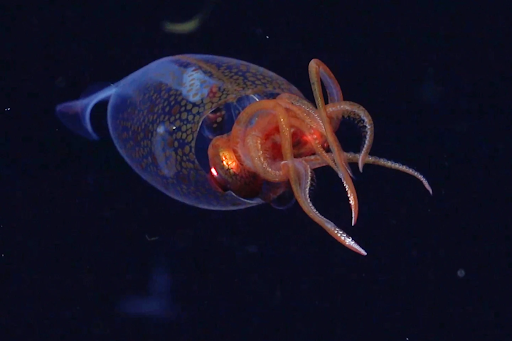The discussion of science in relation to race has been revived as the U.S. faces another one of President Donald Trump’s executive orders, this time planning to revise history and remove focus on the U.S. ‘s past oppression, regardless of its actual severity.
Named “Restoring Truth and Sanity of American Society,” this order focuses on exhibits in different Smithsonian Institutions, such as the Smithsonian American Art Museum. There, an exhibit called “The Shape of Power: Stories of Race and American Sculpture,” mentions how race has been used to maintain systems of power and has been used as a social construct, and therefore is not biological. This exhibit is acknowledged in the act, and regarded as one of the exhibits that puts a bad light on U.S. history. According to The White House, the order responds to these exhibits with statements that at federal and historical sites, such as parks and museums, there will be more focus on “remind[ing] Americans of our extraordinary heritage, consistent progress toward becoming a more perfect Union, and unmatched record of advancing liberty, prosperity, and human flourishing… not to be subjected to ideological indoctrination or divisive narratives that distort our shared history.” The order is mainly aiming to ignore any racist, sexist, or oppressive historical events in U.S. history in exchange for only the positive. Apparently, the negative sections of history are tainting history overall. Earlier in the document, it also states that the “nation’s unparalleled legacy of advancing liberty, individual rights, and human happiness is reconstructed as inherently racist, sexist, oppressive, or otherwise irredeemably flawed. Rather than fostering unity and a deeper understanding of our shared past, the widespread effort to rewrite history deepens societal divides and fosters a sense of national shame,” according to The White House.
This order matches the belief that many people carry, that race and genetics are inherently connected. It states this without explicitly stating it, in the order’s diminishing of the Smithsonian’s exhibit, going against biology and race being unrelated. People who believe this also believe that health issues and intelligence can be determined by race, such as the archaic belief that cranium size or skin color applies to academic performance. However, as stated in the National Library of Medicine (NLM), race is a social and physical separation, not a genetic one.
The history of genetics and race begins with Karl Linnaeus in the eighteenth century, according to BBC. Linnaeus discovered the modern terms of genus and species, a classification system that’s still used. Scientists assign species according to these names, for example, humans are Homo sapiens. However, he also produced four “types” of humans, jammed together by continental location. They include “Asiaticus – people with ‘yellow skin’, and straight black hair; Americanus – indigenous Americans, with ‘red skin’ also with straight black hair; Africanus – ‘black skinned’ people with tight curls in their hair; and Europeaus – ‘white skinned’ with blue eyes,” listed in BBC. Furthermore, scientists for the next hundreds of years sought to assign characteristics and abilities that depend on race; this practice is called racial essentialism. One example of this designation is the Europeaus as “gentle, inventive, acute, and governed by laws,” while the Asiaticus were labelled as “haughty, greedy and ruled by opinions.” In these labels, it is visible how racial designations became such a deep part of human culture, especially in the descriptions of the skin tone as simple colors being a way for humans to stereotype each other.
People from the same region often look similar to each other, adapting over time to their location and its conditions. These physical differences do not have any real effect on genetics and how humans behave. NLM states that ancestral alleles can be the cause of medical issues, they are not race specific. Also, studies have shown that gene frequency does not differ between racial groups, but within them. This can be seen in the fact that there are more differences between an Ethiopian and a Namibian person than there are between either party and a European or Japanese person. Technically, humans are all the same species and do not have the genetic variation necessary to actually apply non-physical characteristics differences between races.
Genetic diversity due to historical events is also important to consider. According to BBC, African American people, who are descendant from enslaved Africans taken during the Transatlantic Slave Trade, are incorrectly classified as “black.” It was common for slave owners to have sexual relationships with their slaves, mixing African American ancestry with European DNA. Therefore, the classification of African American peoples as “black” is actually a biological error. If race were truly a scientific or biological construct, errors such as this would be more significant to how society refers to people’s race. However, due to race being social, it has stayed with society despite human discovery on the diversity within people’s ancestry.
While one could make arguments about how COVID-19 affected African, South Asian, and American Hispanic people more than “white” people. However, while disease does not depend on race it does depend on poverty. According to BBC ethnic minorities are mostly in the lower levels of the socio-economic pyramid, resulting in them being much more susceptible to disease. Also, while everybody was able to stay home, they were still out working, driving buses, cleaning, or managing facilities and with most minorities living in condensed urban housing, it heightens the risk of contraction. Race is social, but those social beliefs have also bled into economics, resulting in some races out at the bottom and some placed at the top to reflect how society views them.
People often confuse genotype and phenotype, which is the main point of science versus race. People determine your “race” by looking at your phenotype, or physically presented characteristics. However what really matters is your genotype, your internal genetics that make up your phenotype. People cannot just know your genotype, so they decided that physical characteristics will determine it. The separation of these two concepts is important to not stereotyping races and thinking before forming an immediate opinion based on somebody’s race.
Race in relation to science has been a significant topic throughout all of history, because humans rely on being able to classify things into an understandable category. However, this caused the development and planting of racism into global culture is especially important in regards to the current executive order being put out. “Correction” of U.S. history does not change culture, and knowing the separation of race and biology could prove useful in the face of applied corrections.




















